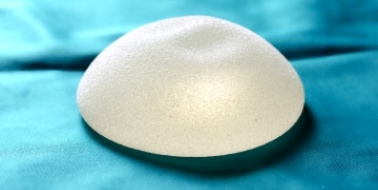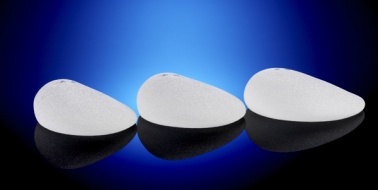When excessively large breasts detract from your appearance, it can be a source of distress. Women may try to downplay their prominence by modifying their wardrobes, but this can be restricting, costly, and uncomfortable. Limiting your clothing options to just a few colors and styles can make it difficult to find clothes you actually like, while the use of breast-minimizing bras such as Spanx may cause discomfort. The alternative option is surgery. At Jefferson Plastic Surgery, our Philadelphia breast reduction surgeons can produce a more proportionate breast profile in appropriate candidates.
Breast Reduction Candidates
Breast reduction is performed on women who naturally have an excessive amount of breast tissue. Patients may have had large breasts since their teens, or the breasts may have increased in size as a result of pregnancy or weight fluctuations. Our surgeons can treat all of these case types. Surgery is indicated when patients have:
- Large, heavy breasts
- Back, shoulder, or neck pain
- Bra-strap indentations on the shoulders
- Difficulty engaging in sports or other activities due to breast size
In addition, the ideal surgical candidate is in good health, does not smoke, and understands the risks and possible outcomes of surgery.
Breast Reduction Techniques
Prior to surgery, patients will meet with our Philadelphia surgeons for a breast reduction consultation. At this time, our surgeons will examine the breast tissue and skin, and ask the patient about her concerns and goals. Depending on the amount of breast tissue and excess skin that is present, one of the following treatment approaches will be recommended.
- Liposuction: The liposuction technique results in the least amount of scarring on the breasts. However, the sole purpose of the liposuction procedure is to remove fat; therefore, liposuction is only appropriate when breast reduction candidates require fat removal. Since the liposuction approach does not involve any skin tightening or nipple repositioning benefits, patients should have good skin elasticity and not require a lift.
- Vertical: Also called the lollipop or LeJour technique, the vertical reduction involves the use of an incision that encircles the areola, and a vertical incision that runs down the center of the breast fold. The incisions and resulting scar resemble the shape of a lollipop. With the vertical reduction approach, our surgeons can remove excess breast tissue and breast skin, lift the breasts, reposition the nipple, and minimize the size of the nipple. This technique is best suited to patients that have mild to moderate skin laxity.
- Anchor: With the anchor, or standard, technique, the vertical incision is made from the center of the nipple down the fold of the breast. Another incision is made along the inframammary crease. The incisions and resulting scar resemble the shape of an anchor. The anchor breast lift allows for the removal of breast tissue, tightening of the breast skin, and repositioning of the nipple. This approach is ideal for patients with severe skin laxity.
Breast Reduction Procedure
Breast reduction surgery takes about two to four hours. The vertical and anchor procedure involve the following steps:
- Our surgeons will use a special pen to mark the breasts
- Anesthesia is administered to sedate the patient
- An antibacterial wash is applied to the breasts
- The breast reduction incisions are made; depending on the technique, these may be around the nipple or the crease of the breast, along with the vertical incision down the fold of the breast
- Excess fat and skin are removed
- The nipple is moved to a more youthful location; the size of the nipple may also be reduced
- The breast reduction incisions are closed
- Taping and bandaging is applied to the breast area to provide protection and reduce the severity of side effects
Breast Reduction Recovery
We recommend that our patients follow our post-operative instructions during the breast reduction recovery period. These include:
- Rest! It is important to take is easy for a few days after surgery
- Take one or two weeks off of work
- Keep the head elevated for at least a couple of days after surgery
- Maintain a regular pain medication schedule
- Use an ice compress to alleviate pain and inflammation
- Do not shower until you get the green light from our surgeons; avoid baths until the incisions have healed
- Wear a soft compression bra for a few weeks after surgery
- Do not engage in heavy exercise or activity for four to six weeks; gradually ease into exercise once this activity has been approved by our surgeons
Breast Reduction Side Effects
It is normal to experience the following side effects after breast reduction surgery:
- Swelling
- Bruising
- Pain
- Itchiness and numbness at the incision site
- Some nausea on the day of surgery
Breast Reduction Risks
Breast reduction risks are unlikely to occur, especially when a qualified surgeon performs surgery. The potential risks include:
- Allergic reaction
- Infection
- Breast asymmetry
- Altered nipple sensation
- Under or overcorrection
- Poor healing of the incisions
- Bleeding (hematoma)
- Fluid accumulation
Breast Reduction Results
Our Philadelphia patients achieve excellent results after breast reduction surgery. Patients will notice an immediate difference in their silhouette after surgery. The best results are seen three months to one year after surgery, when all residual swelling has gone down.
Philadelphia Breast Reduction Consultations
Contact Jefferson Plastic Surgery in Philadelphia to schedule your breast reduction consultation with our surgeons.



